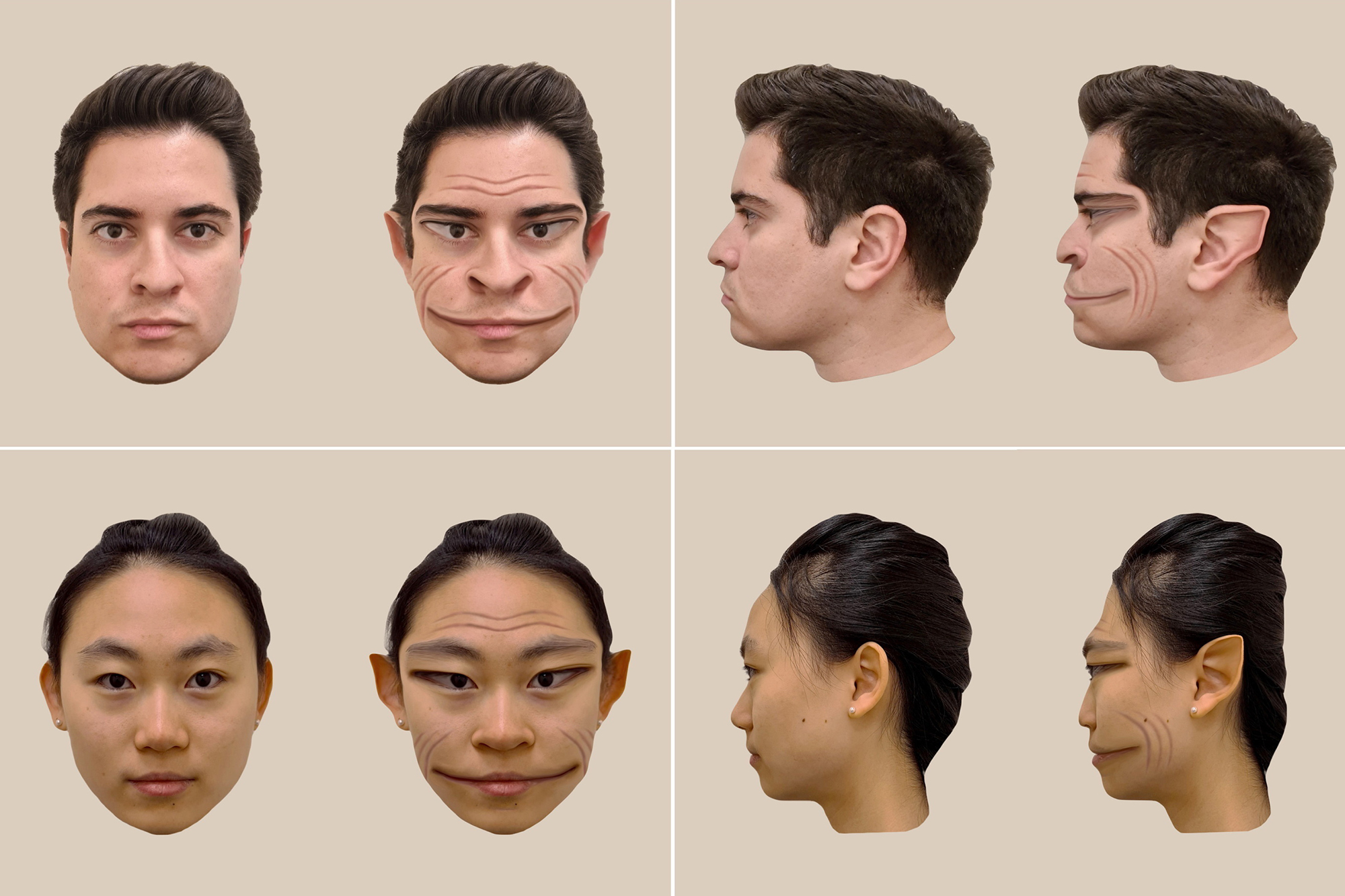
So much for “see no evil.”
Certain people feel like they’re seeing monsters everywhere due to an ultra-rare condition called “demon face” syndrome that causes everyone to look like they have an evil smile. A study detailing this distorted perception disorder was published recently in “The Lancet.”
“It’s a problem that people often don’t understand,” senior author Professor Brad Duchaine, who teaches psychology and brain sciences at Dartmouth College in New Hampshire, said.
Dubbed prosopometamorphopsia, or PMO, the exceedingly rare affliction — of which only 75 cases have been reported — visually distorts faces every time the sufferer looks at a person, making them appear satanic.
Visions vary depending on the person — specifically regarding eye shape, size, color, and position of facial features — and the condition can last for days, weeks or even years.
The researchers reportedly studied the case of a man a 58-year-old man with a 31-month history of this twisted perception syndrome, which he described as “demonic.”
“The patient stated that the distortions — severely stretched features of the face, with deep grooves on the forehead, cheeks and chin — were present on every person’s face he encountered, but he reported no distortions when looking at objects, such as houses or cars,” study authors wrote. “The patient said that even though faces were distorted, he was still able to recognize who they were.”
Interestingly, he didn’t see these creepy countenances when viewing facial representations on screen or paper. And, unlike some symptoms of schizophrenia or other psychological disorders, the goblin-like distortions weren’t “accompanied by delusional beliefs about the identities of the people he encountered” such as family and friends.
Thankfully, for the first time ever, researchers were able to create photorealistic visual representations of PMO-induced facial distortions, effectively allowing them to see the world through the sufferer’s eyes.
To accomplish this, they took a photo of a person’s face and then showed it to the patient on a screen while he looked at the real person’s actual face.
He then provided real-time feedback on how the bonafide face differed from its on-screen counterpart.
Like a cutting-edge courtroom sketch artist, scientists then used a computer software to visually recreate the distortions he described, before running them by the patient to confirm that’s what he saw. In other words, they were putting a demon face to a name.
“Through the process, we were able to visualize the patient’s real-time perception of the face distortions,” said Dr. Antônio Mello, the study’s lead author and a researcher at Dartmouth. “In other studies of the condition, patients with PMO are unable to assess how accurately a visualization of their distortions represents what they see because the visualization itself also depicts a face, so the patients will perceive distortions on it too.”
In doing so, researchers hope to raise awareness about the “demon face” disorder, which is commonly misdiagnosed as a psychiatric disorder.
Dr. Duchaine claims that many of the team’s PMO patients went to see healthcare professionals, only to be diagnosed with schizophrenia and put on anti-psychotics — despite the fact that they suffered from a visual affliction.
“It’s not uncommon for people who have PMO to not tell others about their problem with face perception because they fear others will think the distortions are a sign of a psychiatric disorder,” he claimed.
Unsurprisingly, the cause of this condition is also poorly understood, although it could have to do with a glitch in the neural network responsible for processing faces.
Researchers believe the patient’s visual disturbances could’ve been caused by a head injury he sustained at 43, or carbon monoxide poisoning he suffered four months before the symptoms started.
MRI scans also revealed a legion on the left side of his brain — another possible PMO trigger.














